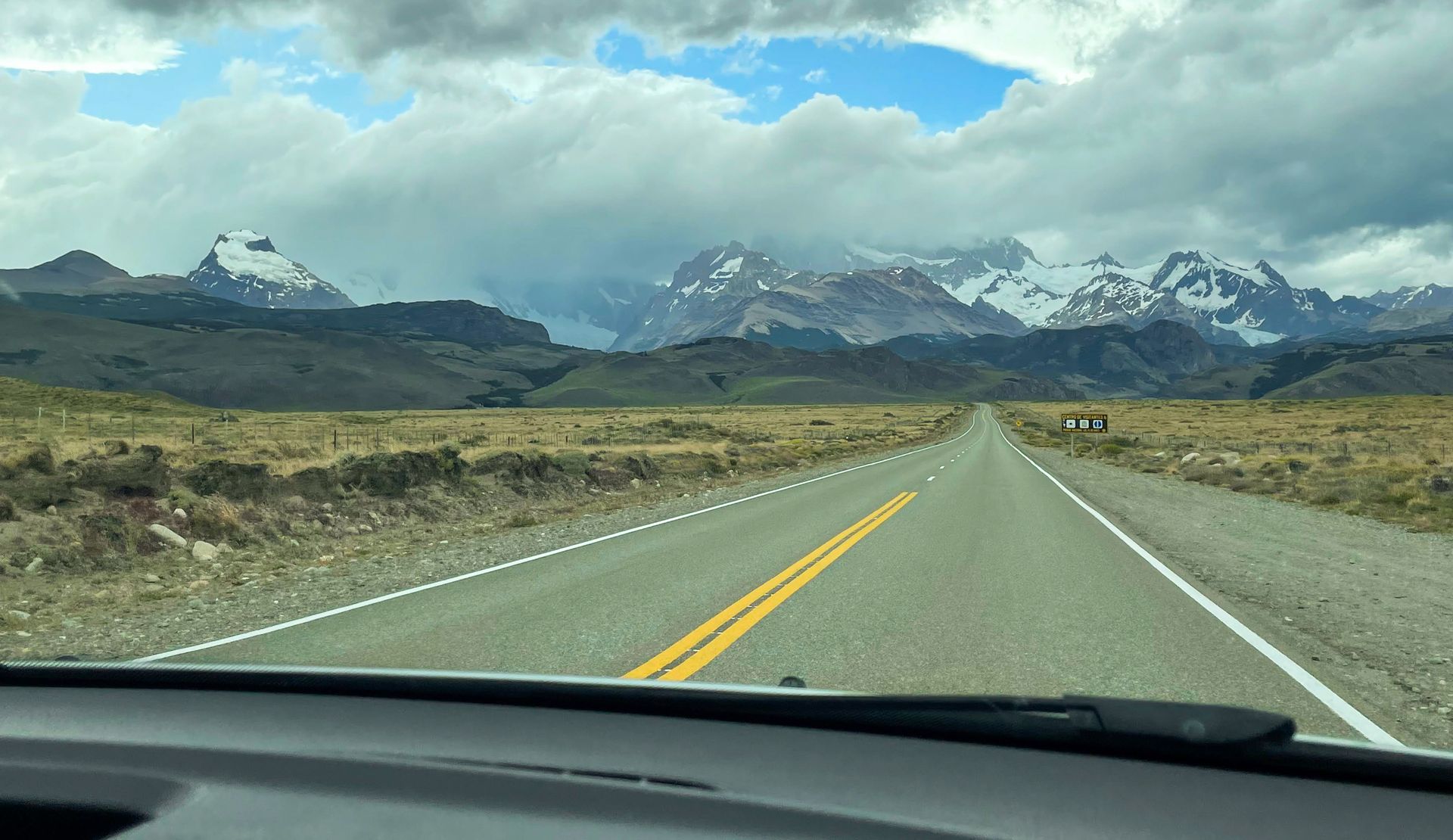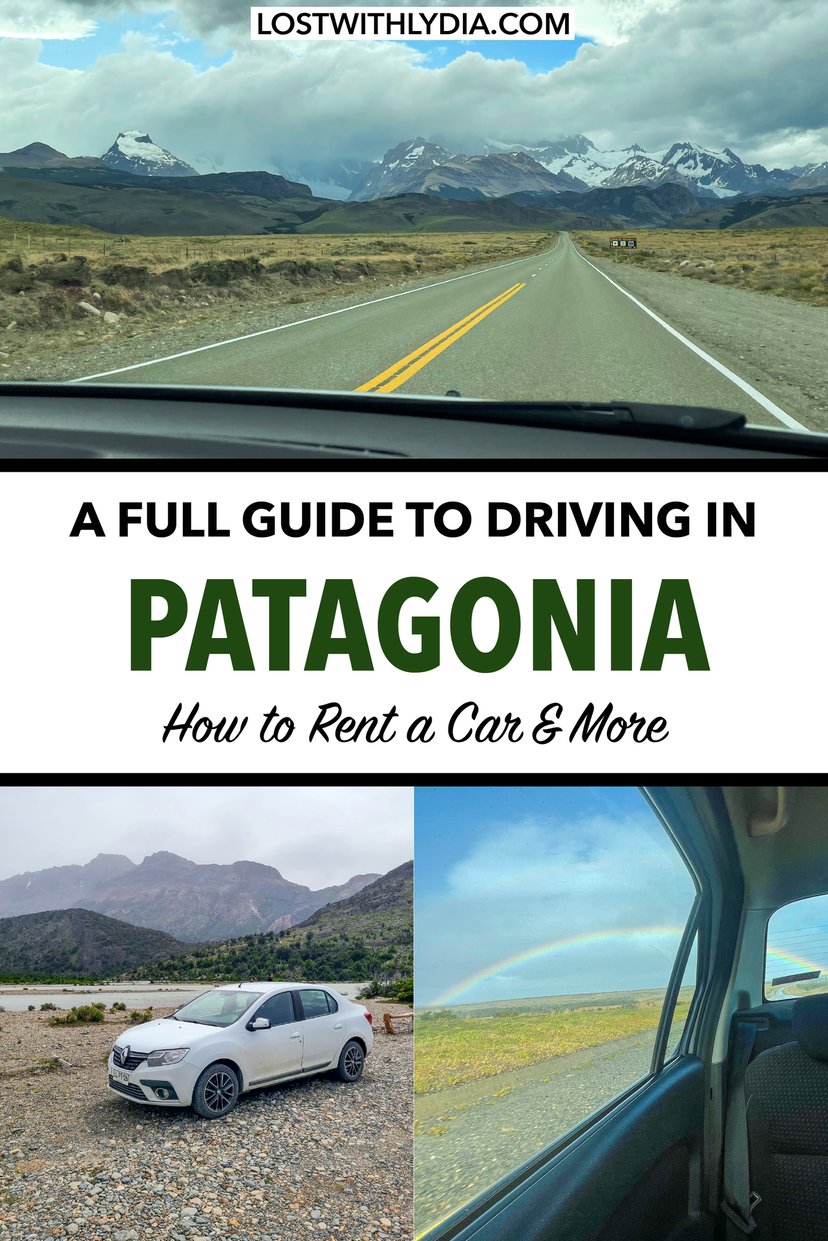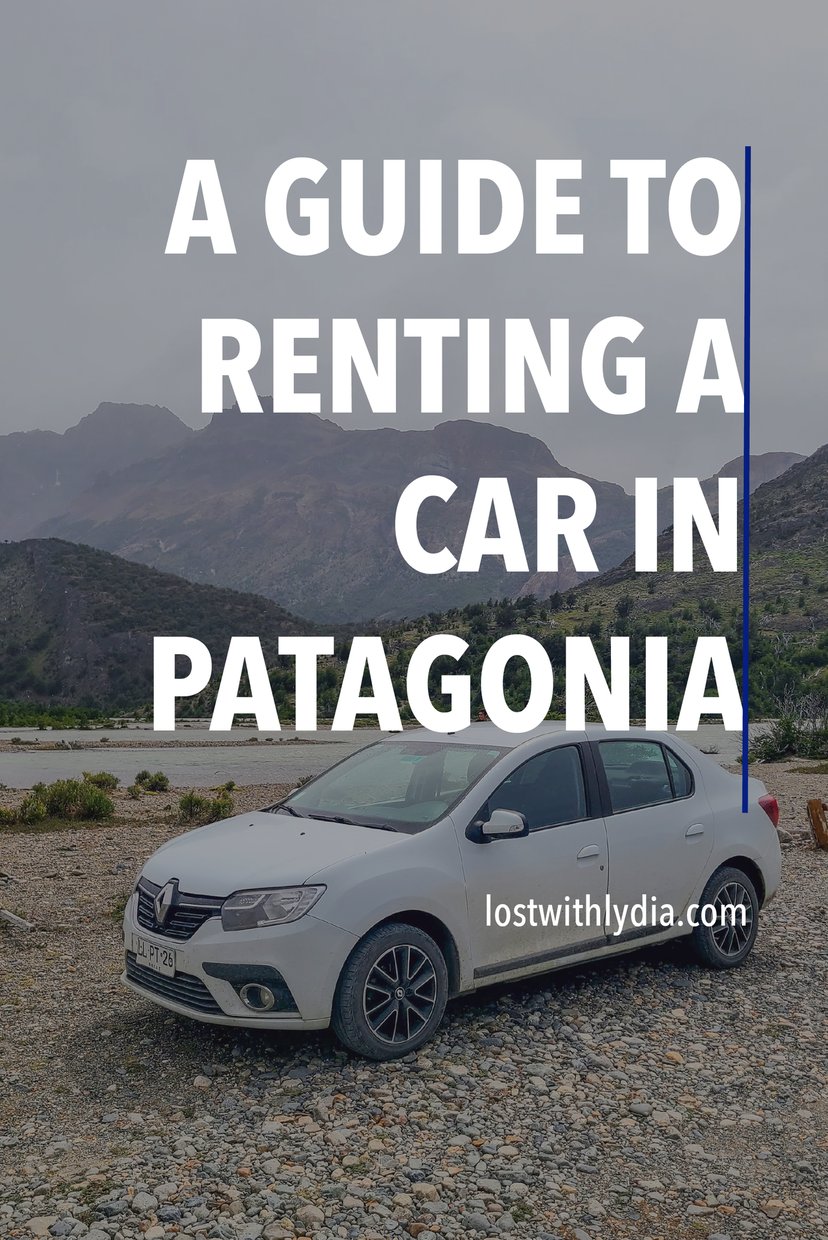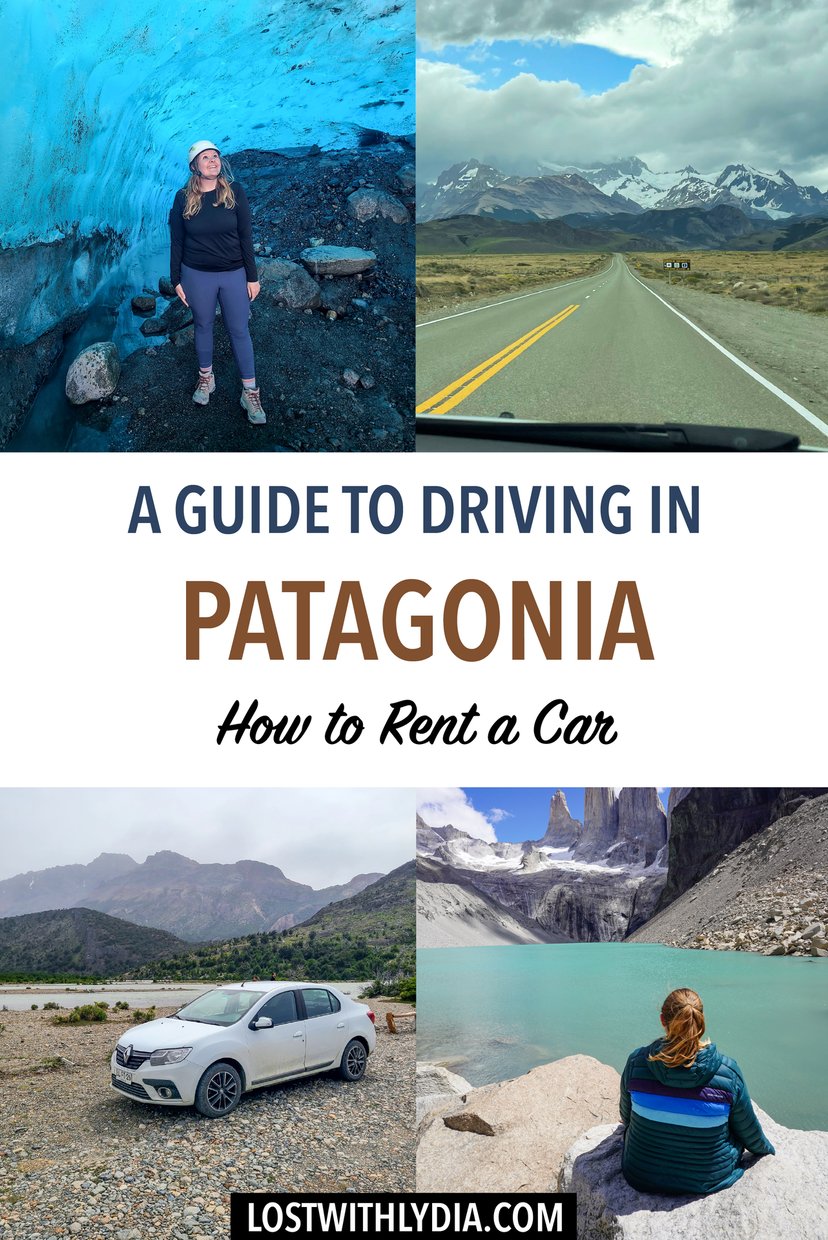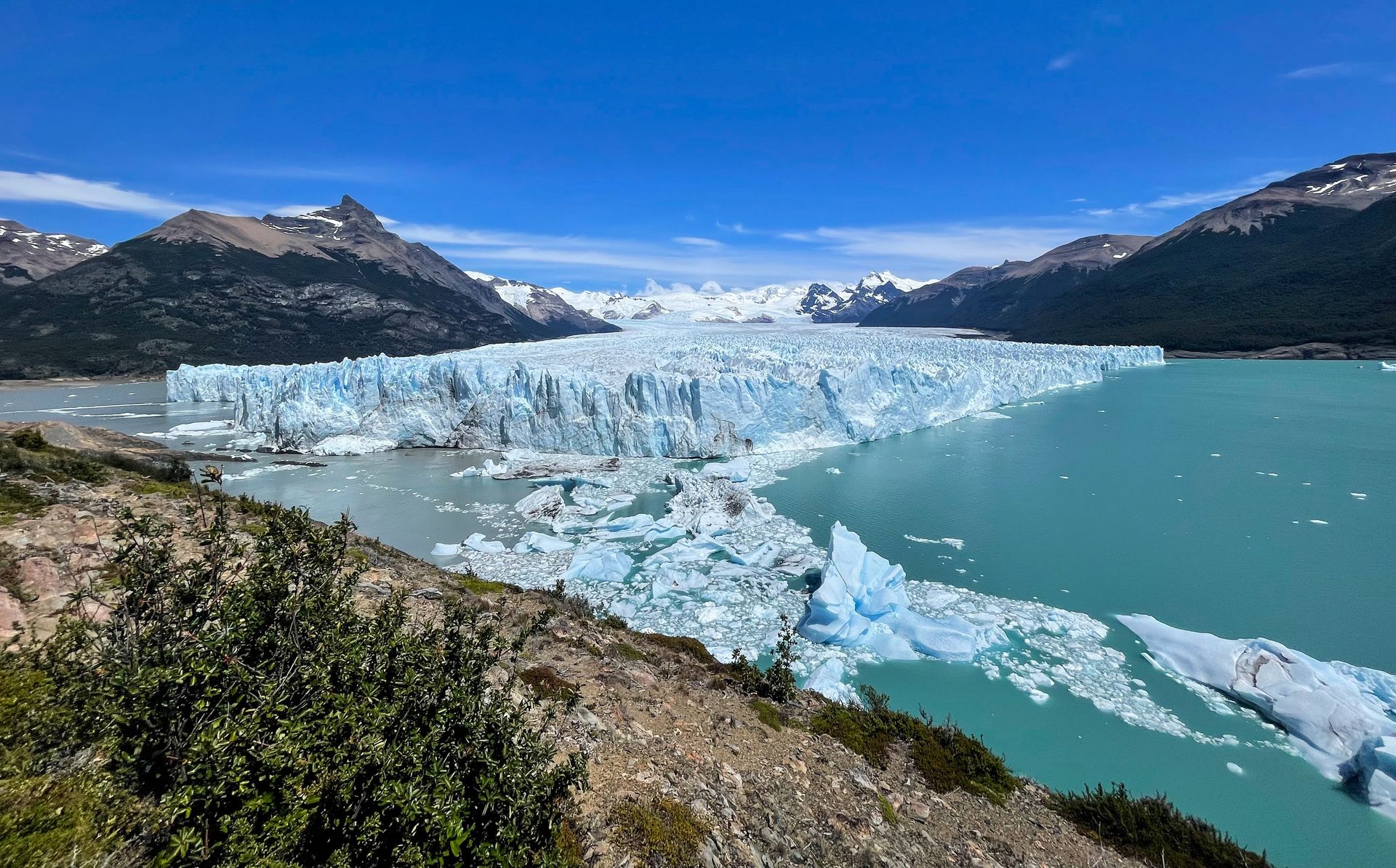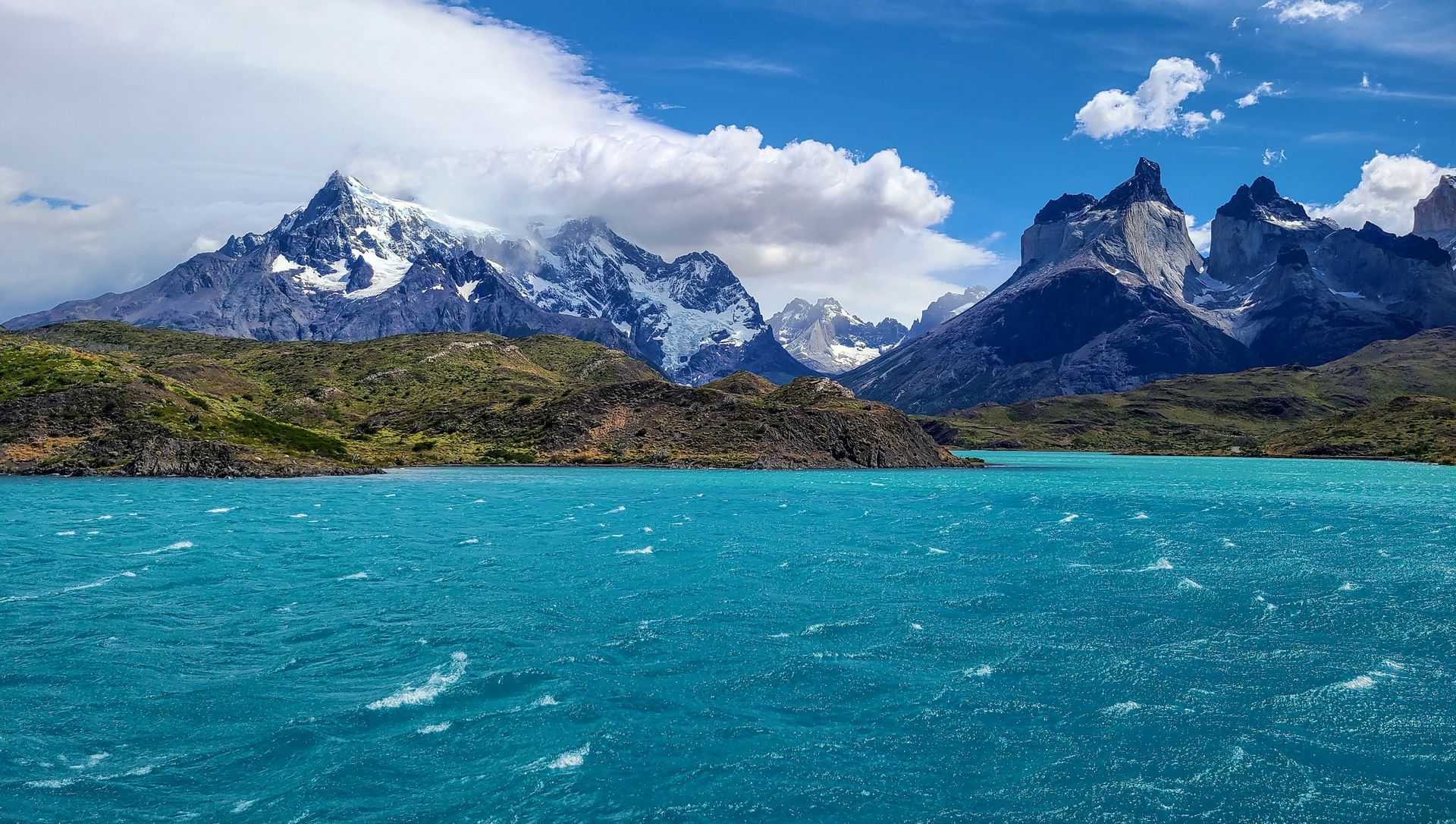Chile
A Guide To Renting a Car and Driving in Patagonia
May 8, 2023
If you want ultimate freedom traveling across Patagonia, you’ll want to rent a car! This will allow you to get off the beaten path and follow your own schedule instead of relying on bus schedules or taxis.
If you are visiting Patagonia and considering car rental, this post is for you. Keep reading to learn everything you need to know about renting a car in Patagonia, including what to expect, how to cross the border between Argentina and Chile in a rental car, what it’s like to drive in Patagonia and more.
For my two week Patagonia itinerary, I started my trip in Chile and rented a car from Punta Arenas. If you’re deciding between flying into Puerto Natales or Punta Arenas, note that Punta Arenas is a larger city and has more car rental options. If you are beginning your Patagonia road trip from Argentina, you should fly into El Calafate, where there are several rental car companies available.
An Overview to Renting a Car in Patagonia
In order to rent a car in Patagonia, you must have a valid driver’s license from your country and be 21 or older. An international drivers license is only required if your country doesn’t use latin characters on your license.
There are several rental car companies in Punta Arenas, including large international chains and smaller companies. We opted to rent through Avis because it’s a company we use often and because they were willing to provide a border crossing permit for driving into Argentina.
If you plan to cross the border between Chile and Argentina, make sure the company you rent from allows border crossing. If it’s unclear when searching online, give them a call.
Another important thing to know about renting a car in Patagonia is that the majority of the cars are manual or stick shift. For the company and dates we were looking at, we did not even have the option to rent an automatic vehicle. So make sure you’re comfortable driving this type of vehicle!
If you are visiting during Patagonia’s peak summer season (December to March), the rental cars may sell out quickly. Be sure to book at least a few months in advance.
My Experience Renting from Avis
- Our rental was reserved through Avis, but the local rental car office also rented the same cars under their local brand.
- Avis arranged for a driver to pick us up from the Punta Arenas airport and take us to their office in downtown Punta Arenas.
- We sat down in the office and were issued the border crossing permit (which also had to be notarized). They also provided us maps and advice for driving around Patagonia. It made us feel much more confident in our trip.
- We rented a small car and the base rate was about $38 a day (for December/January 2022/2023).
Driving in Patagonia
Here are some tips and things to know about driving in Patagonia!


- The wind can be very intense in Patagonia. You may feel like you’re going to blow away on a particularly gusty day. Be sure to hold onto your doors when opening them and drive carefully.
- I felt very safe driving and traveling around Patagonia. Some areas are very remote, but I never felt lost or in any danger.
- Because some areas are remote, be sure to download offline maps and/or carry a physical map to have a safe journey.
- You will likely see a lot of wildlife as you travel across the countryside. We saw 100’s of rhea (look like ostriches) and guanacos (look like llamas). Be sure to pay close attention so you don’t hit them.
- In Argentina, there is a law to keep your headlights on at all times when outside of the cities. This is not a law in Chile, but it’s a great safety measure.
- Gas stations can be few and far between while you’re driving around Patagonia. Be sure to fill up when you can.
- It is best to avoid driving at night white you’re traveling through Patagonia. The roads in the countryside are not well lit and there is a lot of wildlife, so you’re better off sticking to driving during the day.
- Speed limits will vary between the two countries and between the urban and rural areas. Generally, the speed is 25 or 35 mph in urban areas, 60 to 70 mph in the countryside and 60 to 80 mph on highways.
- Cellular service on the roads in Argentina was fairly non-existent, but the towns had some reception or wifi. Safety phones were located every couple miles on the bigger roads.
- Parking was not a problem anywhere we went. Most places had small lots or street parking, but they were never full.
- You will see a lot of signs that are a yellow triangle with a red rim. This is a ‘give way’ and similar to a yield. You can proceed if no one is coming but should stop if someone is coming.
Crossing the Chile-Argentina Border in a Rental Car
The process to cross the border between Chile and Argentina is relatively straightforward, but it was still a bit confusing for us for our first time (and as non-Spanish speakers). Here is an overview and a step by step process so you can be prepared.
1. You will need a permit to cross the border from your rental car company. The permit includes the dates of your rental, your driver's information and the information for the owner of the car. It will need to be stamped and checked during the crossing.
2. Your car is also supposed to have an engraved number in the window to cross in Argentina. To be honest, our car was missing this, but it luckily wasn’t an issue.
3. At the Torres del Paine border crossing, it’s a pretty long drive between the two border checkpoints (about 10 minutes). If you’re crossing from Chile into Argentina, the road will become unpaved as soon as you enter Argentina. It may feel a bit long, but just keep going and you’ll reach the checkpoint.
4. Usually the crossings are pretty quick, but there is a chance you’ll get stuck behind a bus and have to wait a long time while everyone on the bus is stamped in and out.
Step by Step Border Crossing Process in Both Directions
The process should be similar for all crossing points, but at higher volume ports of entry, the location of each step may differ. This step by step process documents my experience at the border crossing in the town of Cerro Castillo, Chile and closest to Torres Del Paine National Park.
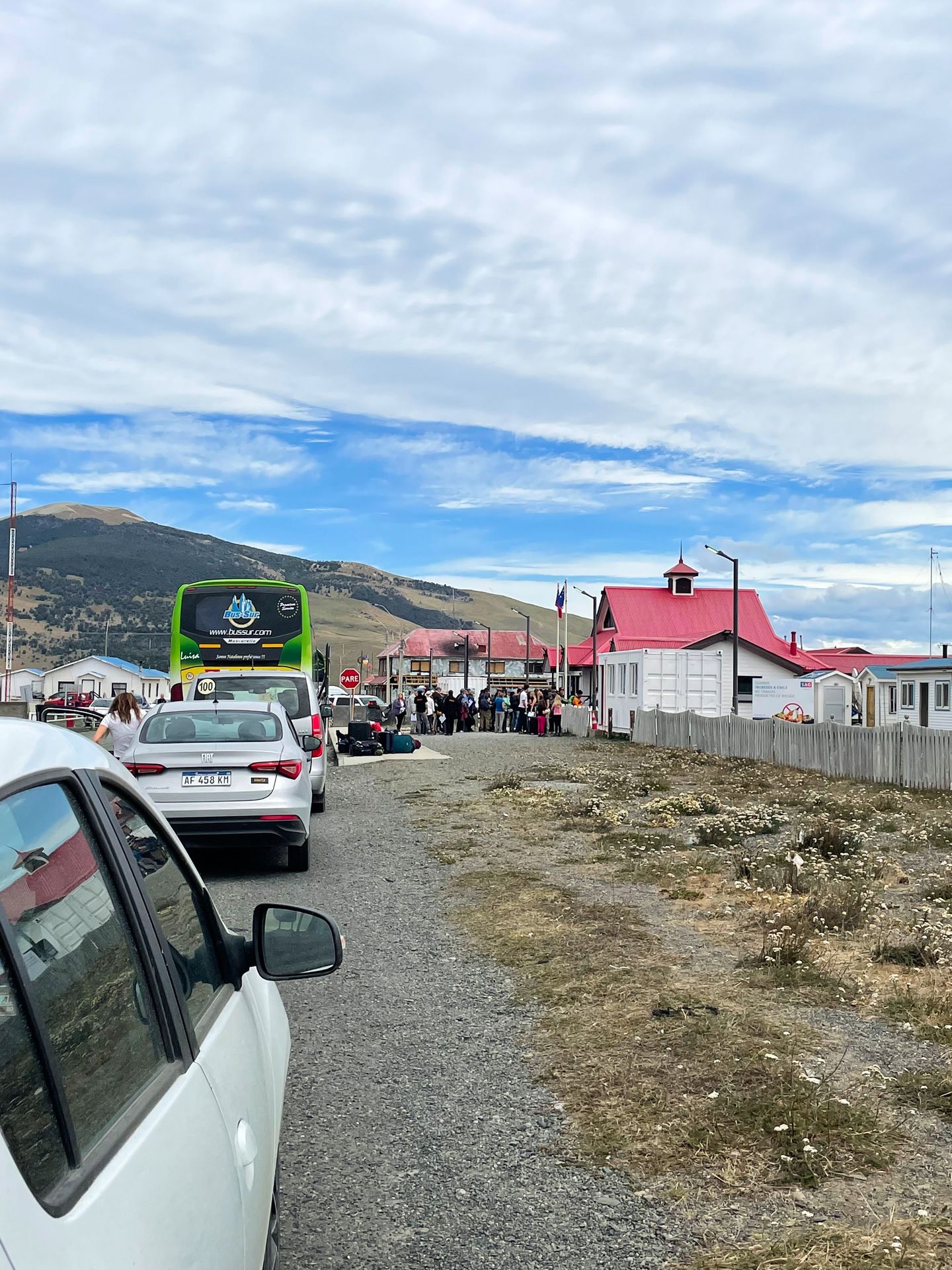
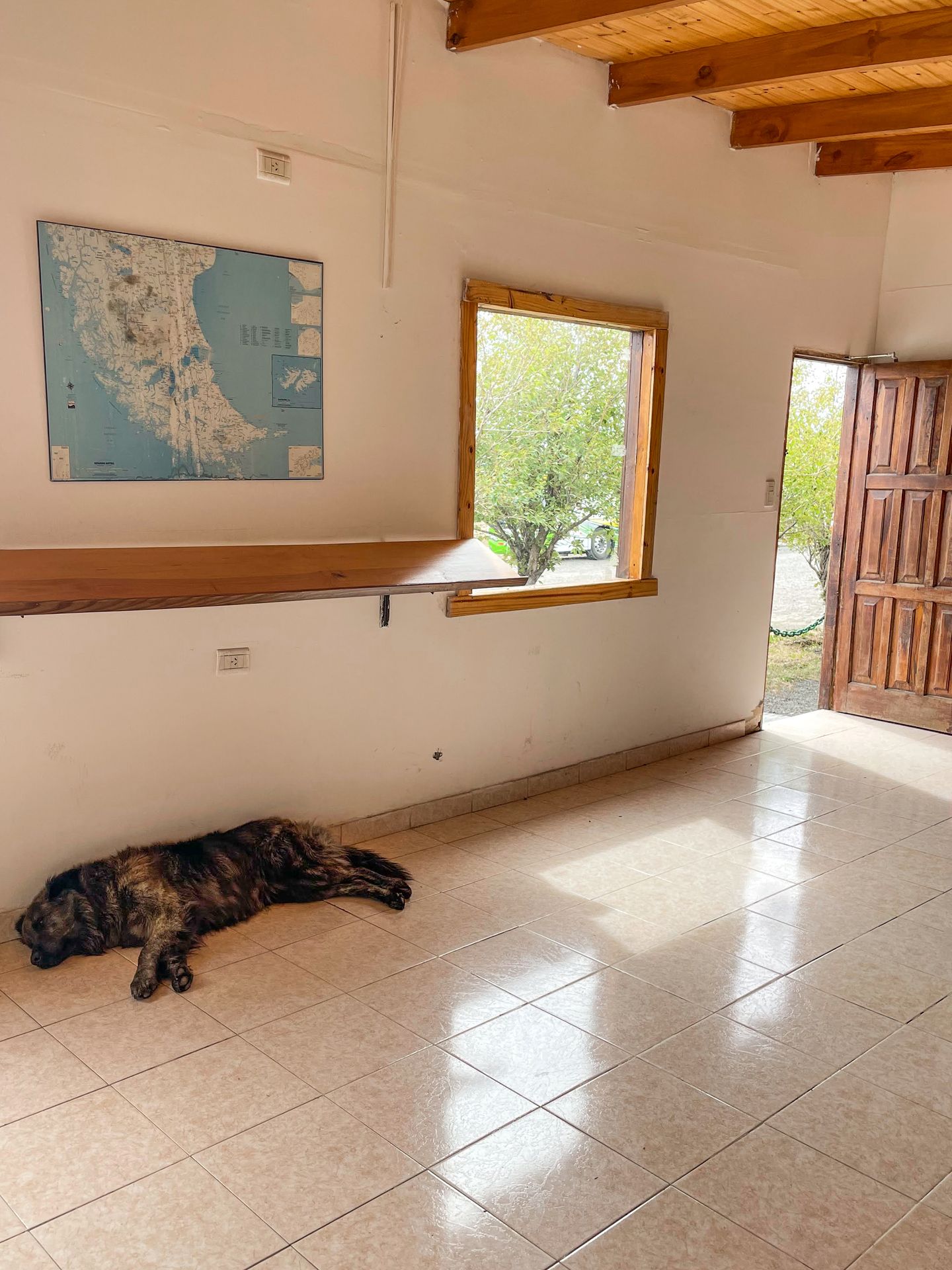
Crossing from Chile to Argentina
1. Park outside and walk in. You will show your passport and your rental car paperwork and get stamped out of the country. Chile has 2 steps to this process. The PDI and the check for the rental car. They will provide you a slip representing your entire group that acts as a worksheet across both sides of the border, each step will add a stamp. Don’t lose this! There are different windows inside for each step of the process.
2. Drive to the Argentina checkpoint.
3. Park outside and walk in. You will once again show your passport and rental car permit and get stamped into the country. They will take the completed worksheet slip at the end.
4. Continue driving into Argentina and have a great road trip!
Crossing from Argentina to Chile
1. Park outside the Argentina station and get stamped out of the country.
2. Drive to the Chile checkpoint.
3. Park outside the Chile checkpoint and walk in. Show your passport and rental car paperwork and get stamped into the country. Returning to Chile is a 3 step process. PDI, Car Rental and an agricultural inspection. You will also need to fill out a declaration form and declare if you are bringing in any food. Chile has strict rules on what you can bring into the country and does not allow fresh fruit or vegetables at all. Be sure to throw them away prior to entering or hand them over to the officers to avoid a fine. Other items such as any animal products (meats, dairy, cheese, leather) and crops such as coffee, juice, alcohol, nuts and more, must be declared.
4. Send your luggage through the metal detectors and wait for an officer to search your car.
5. They will raise the gate and allow you to drive through and continue your trip.
Driving in Chile vs Argentina
In general but especially in the cities, driving is more wild in Argentina. There seemed to be no rules when it came to driving in El Calafate and we always felt nervous at 4-way intersections that didn’t have stop signs. The countryside was a bit more straightforward to navigate as long as you paid close attention to wildlife.
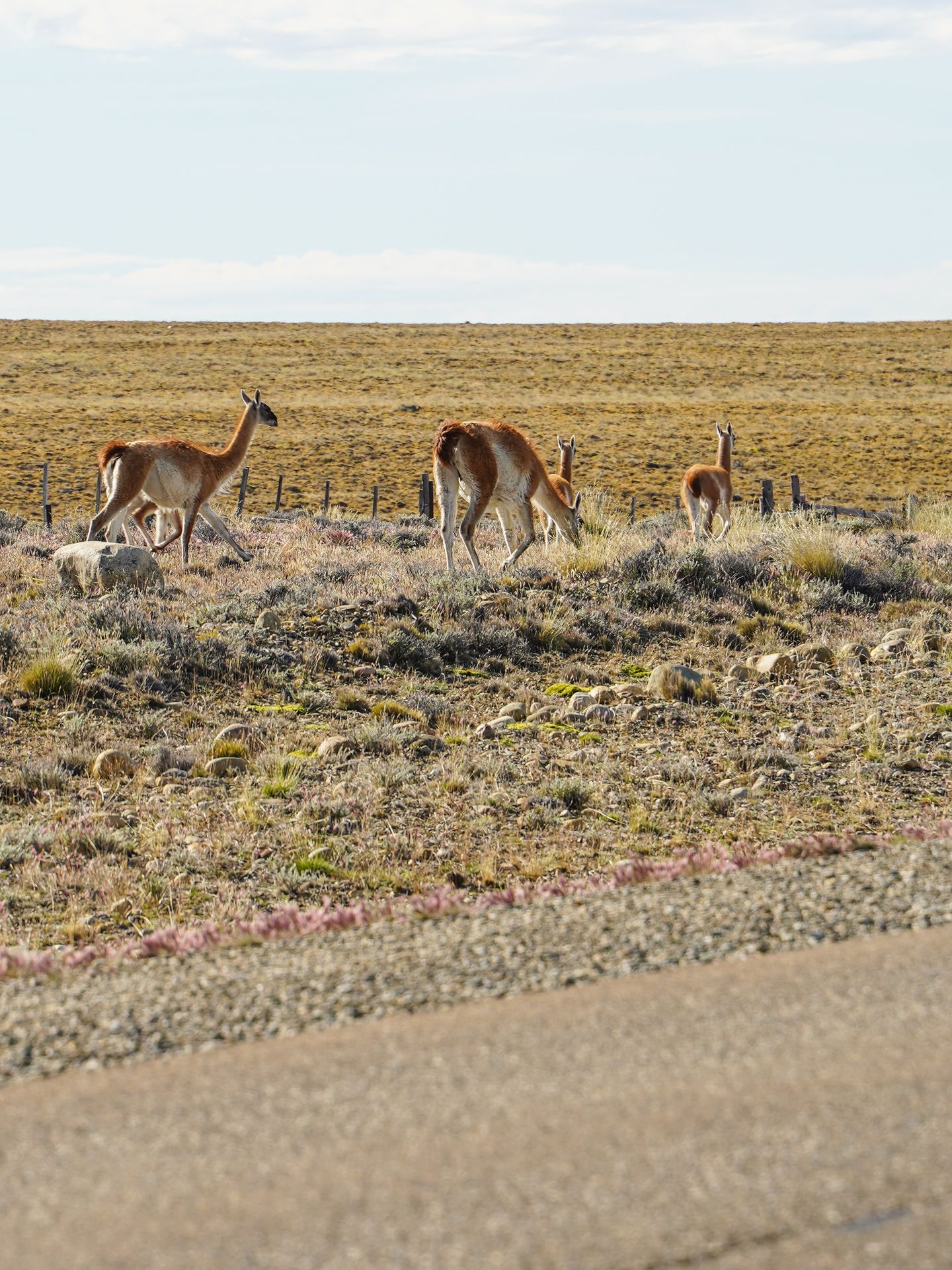
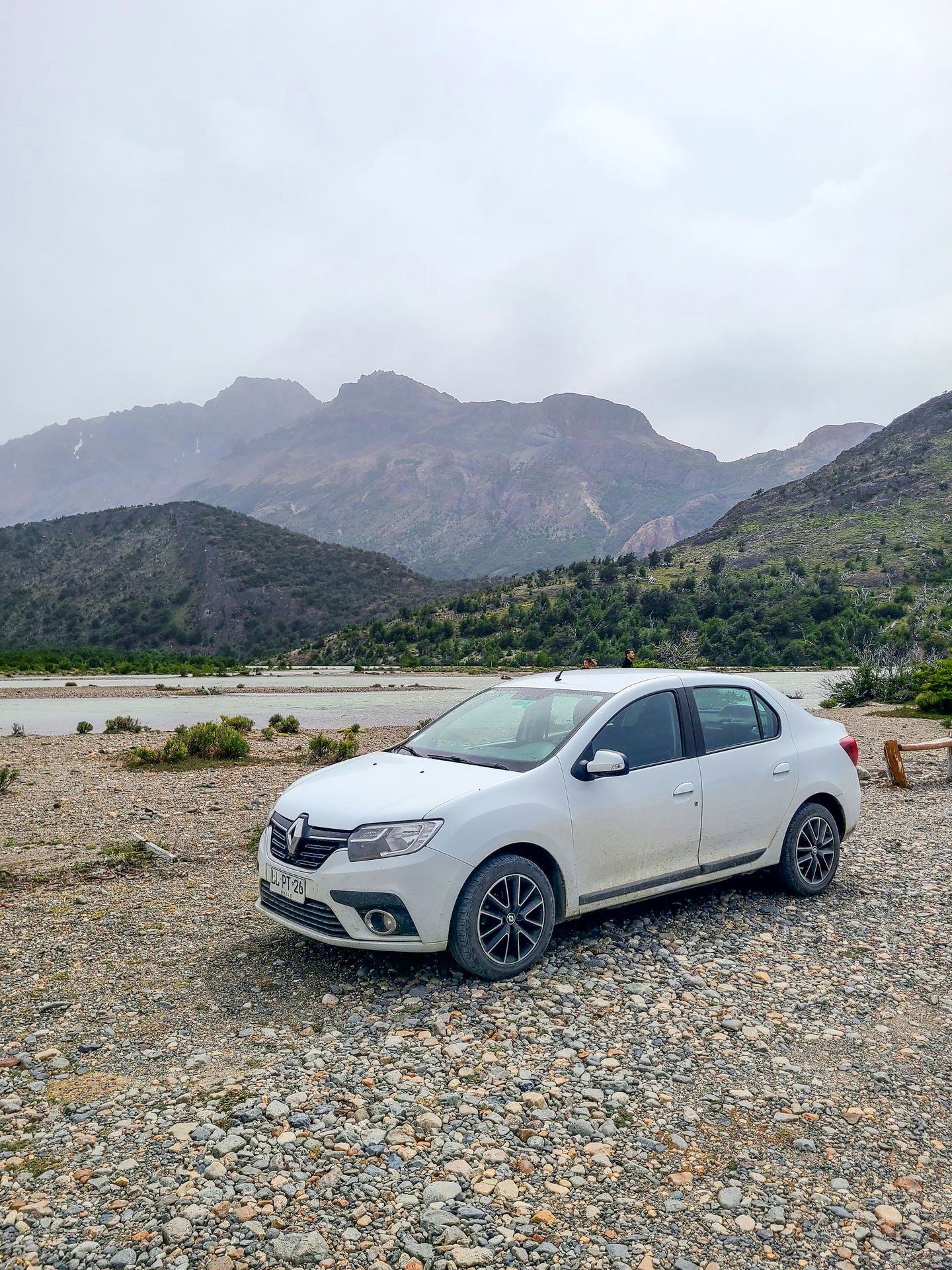
There are more speed limit signs in Chile than Argentina. In Argentina, speed limit signs were sometimes few and far between, and most drivers seemed to drive much faster than any posted signs. Also note that speed limits can vary depending on the size of the vehicle.
There were a couple of police checkpoints when driving through each of the countries, but we were mostly just waved through.
Avoid this Road While Driving Through Argentina

One important tip when you are driving through Argentina is to avoid the Route between Estancia Tapi Aike and El Cerrito. Your map may try to take you this way, but you should avoid this long section of unpaved road due to its remote nature and the strong possibility of a flat tire or other car trouble. Instead, drive to Esperanza and then turn left to continue Northwest to El Chalten. It looks longer, but you’ll be driving faster so it will probably take the same or less amount of time.
Getting Gas in Patagonia
Gas stations can be few and far between when you’re traveling through Patagonia, so fill up when you can! When you do get gas, know that the majority of gas stations are manned by an attendant. When you go to fill up, they will ask if you want to fill up all the way or a partial amount. In Argentina, the word for gas is “Nafta.”
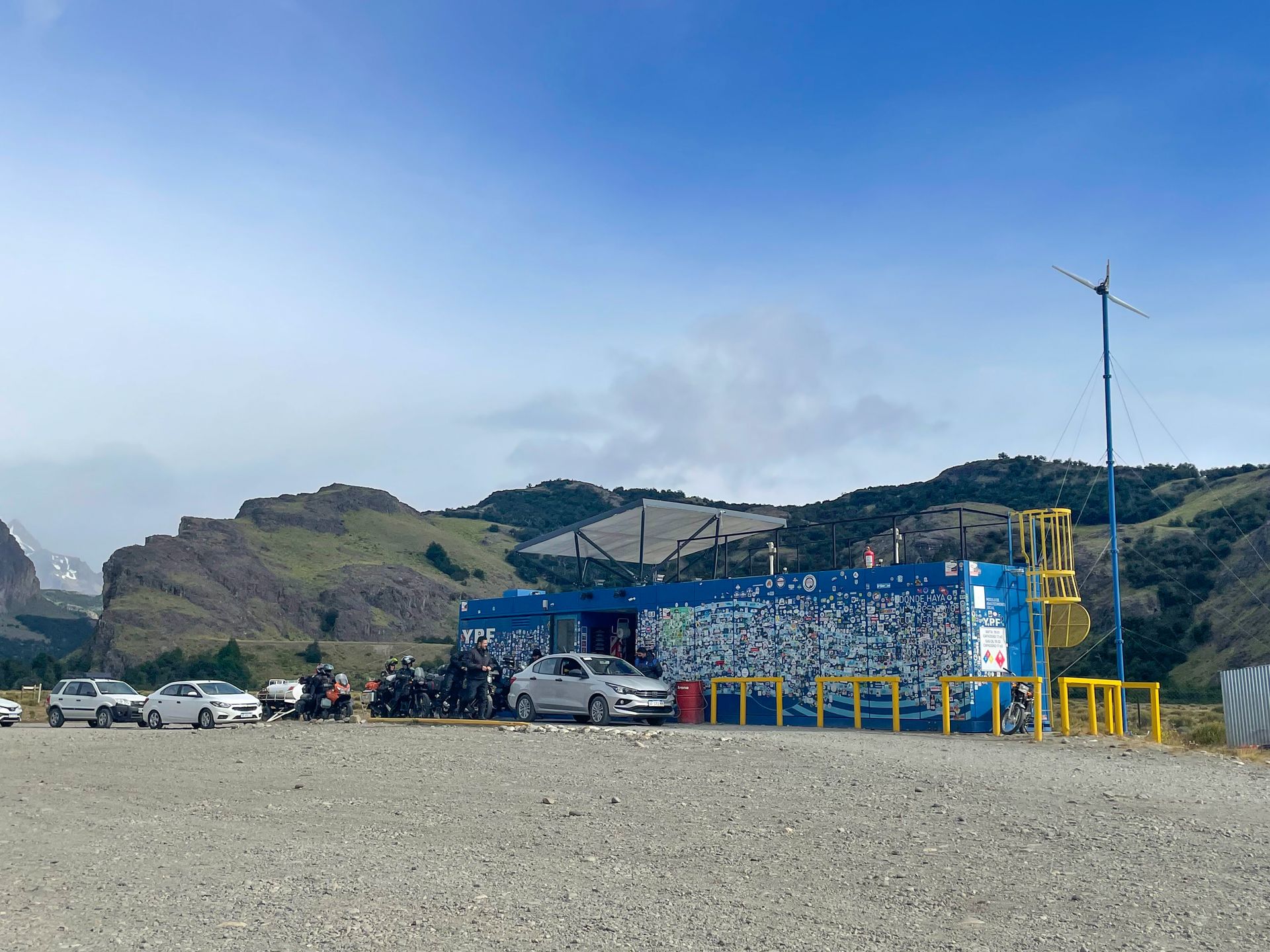
The gas station in El Chaltén is unique in that there is only one gas station in town and it is cash only. There are often long lines and on rare occasions, they run out of gas. Be sure to plan accordingly.
Final Thoughts
As long as you’re prepared with the proper border crossing permit, keep an eye on your gas levels and are able to drive a manual vehicle, renting a car in Patagonia is very much worth the effort. With your own vehicle, you’ll be able to come and go as you please without having to worry about a bus schedule or other types of transportation.
I thought that it was overall easy and very doable to drive yourself around Patagonia, and would definitely recommend it for your Patagonia trip!
For more information on visiting Patagonia, check out these blogs:
- Epic Patagonia Two Week Itinerary
- The Ultimate Guide to Hiking the W Trek in Torres del Paine National Park
- 30 Tips for Hiking the W Trek in Patagonia
- A Full Packing List for the W Trek
Thanks for Reading!
Let's stay in touch!
Join the Lost with Lydia email list to get monthly travel guides and tips!
